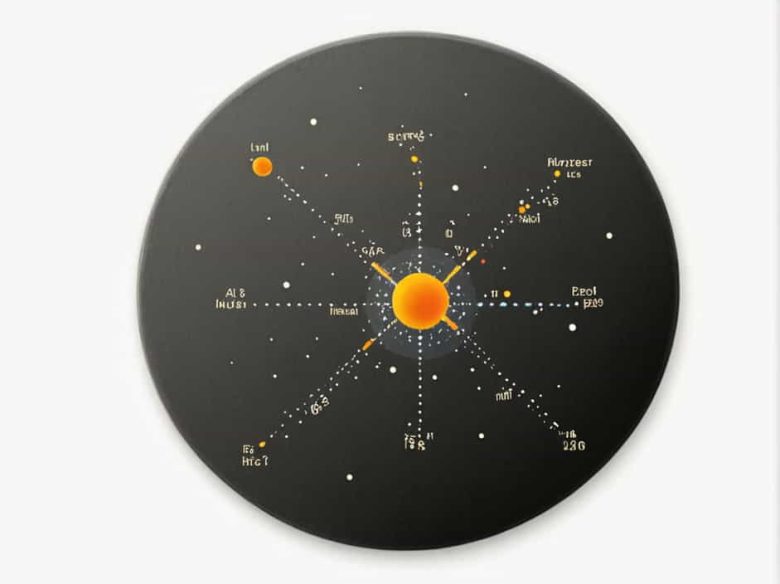The Hertzsprung-Russell (H-R) diagram is one of the most fundamental tools in astronomy and astrophysics. It provides a visual representation of the properties of stars, offering key insights into their behavior, life cycle, and the structure of our universe. By studying this diagram, scientists can better understand how stars evolve and how they are classified based on their temperature, brightness, and other characteristics.
In this topic, we will explore what the Hertzsprung-Russell diagram is, how it is used, and why it is so important for astronomers. We will also discuss how this diagram helps in understanding the different types of stars, their life stages, and their place in the cosmos.
What is the Hertzsprung-Russell Diagram?
The Hertzsprung-Russell diagram is a scatter plot that shows the relationship between a star’s luminosity (brightness) and its surface temperature. The diagram is named after two astronomers, Ejnar Hertzsprung and Henry Norris Russell, who independently developed similar versions of it in the early 20th century.
Key Features of the Diagram
-
X-axis (Temperature): The horizontal axis of the H-R diagram represents the surface temperature of stars, usually in Kelvins (K). As you move from left to right, the temperature decreases. On this axis, stars are grouped by their spectral class, ranging from O-type stars (the hottest) to M-type stars (the coolest).
-
Y-axis (Luminosity): The vertical axis represents a star’s luminosity, which is a measure of its total energy output. It is typically plotted in terms of solar luminosities (the luminosity of our Sun). The higher a star is on this axis, the brighter it is.
The Different Regions of the Hertzsprung-Russell Diagram
The H-R diagram is divided into different regions that represent various types of stars at different stages of their life cycle. These regions are often characterized by distinct groupings of stars, which include:
1. The Main Sequence
The Main Sequence is the central band on the H-R diagram that stretches from the top-left to the bottom-right. Stars in this region are in the prime of their life, fusing hydrogen into helium in their cores. This process releases energy, allowing the stars to shine.
-
Hot, Massive Stars: On the left side of the Main Sequence, you will find the hottest and most massive stars, such as O-type and B-type stars. These stars are very luminous but have relatively short lifespans.
-
Cooler Stars: On the right side, you find cooler stars like G-type stars (which includes our Sun) and M-type stars (red dwarfs). These stars are less luminous and burn their fuel at a slower rate, giving them longer lifespans.
2. The Red Giants and Supergiants
Above the Main Sequence on the H-R diagram, you will find stars in the Red Giant and Red Supergiant regions. These stars have exhausted the hydrogen in their cores and are now expanding and cooling.
-
Red Giants: These stars, like Alpha Centauri, are in the later stages of their evolution. They are cooler than Main Sequence stars but are much larger and more luminous.
-
Red Supergiants: These are even larger and more luminous than Red Giants. Examples include stars like Betelgeuse in the constellation Orion.
3. White Dwarfs
Below the Main Sequence, you will find the White Dwarf region. White dwarfs are the remnants of stars that were once similar to our Sun. After exhausting their fuel, they shed their outer layers and leave behind a dense, hot core that no longer undergoes fusion. White dwarfs are small but have a high temperature, making them relatively bright, but their low luminosity places them in the lower part of the diagram.
How Is the Hertzsprung-Russell Diagram Used?
The Hertzsprung-Russell diagram serves several crucial purposes in the field of astronomy. It helps astronomers to:
1. Classify Stars
The diagram allows astronomers to classify stars based on their spectral type and luminosity. By determining where a star lies on the diagram, scientists can identify its characteristics, such as temperature, size, and stage in its life cycle.
2. Determine Stellar Evolution
One of the most important uses of the Hertzsprung-Russell diagram is in understanding the evolution of stars. The diagram illustrates the different stages a star undergoes during its life. For example, a star like the Sun spends most of its life on the Main Sequence, then expands into a Red Giant, and finally becomes a White Dwarf.
By studying where stars are located on the H-R diagram, astronomers can estimate their age, mass, and other factors that influence their life cycles. This helps researchers predict how stars of different masses will evolve.
3. Estimate Distances to Stars
The luminosity and temperature of stars on the H-R diagram are closely related. By measuring the apparent brightness of a star and comparing it to its position on the diagram, astronomers can estimate the distance to the star. This is important for mapping the structure of our galaxy and understanding the distribution of stars in space.
4. Understand Stellar Populations
The Hertzsprung-Russell diagram helps astronomers study stellar populations, or groups of stars that share similar characteristics. By examining the H-R diagram of different star clusters, astronomers can learn about the age and formation history of these clusters.
5. Study Stellar Remnants
After a star has exhausted its fuel and moved off the Main Sequence, it eventually reaches the end of its life. The H-R diagram helps astronomers identify these stellar remnants, such as White Dwarfs, Neutron Stars, and Black Holes, by analyzing the temperature and luminosity of the stars in these stages.
The Significance of the Hertzsprung-Russell Diagram
The Hertzsprung-Russell diagram is one of the most important tools in modern astronomy. It provides valuable information about the life cycles of stars, how they interact with their environments, and how they influence the formation of planets and galaxies. By using this diagram, scientists can predict the future of stars, such as when they will exhaust their fuel and what will happen to them afterward.
Additionally, the H-R diagram helps astronomers categorize stars based on their spectral types and luminosity, allowing for more accurate observations and measurements of the stars in our galaxy. It also serves as a fundamental tool in studying the structure of galaxies and the evolution of the universe itself.
the Hertzsprung-Russell diagram is a vital tool that astronomers use to study the characteristics and life cycle of stars. It provides a clear, visual way to classify stars by temperature and luminosity, helping us understand how they evolve over time. By studying the H-R diagram, scientists can gain insights into the age, size, and lifespan of stars, as well as learn about stellar populations and remnants. Ultimately, the Hertzsprung-Russell diagram is an essential part of the ongoing exploration and understanding of the cosmos.



